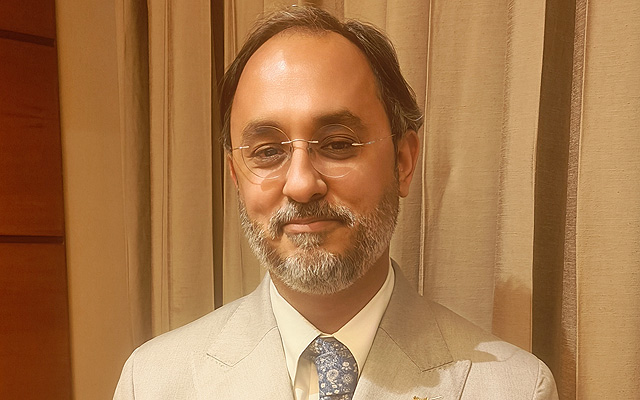Our Terms & Conditions | Our Privacy Policy
Betting big on India | TTG Asia
 What are the focus areas for Radisson Hotel Group (RHG) in India? Which brands are you prioritising in the Indian market?
What are the focus areas for Radisson Hotel Group (RHG) in India? Which brands are you prioritising in the Indian market?
With approximately 130 operational hotels in India and 20 more openings planned, I believe the country is poised for significant growth in the mid-scale, upscale and upper-upscale segments. Radisson Hotel Group is well-positioned to capture this opportunity. Last year, we launched a new mid-scale brand specifically designed for India: Park Inn & Suites. In the upscale and upper-upscale segments, we continue to expand with brands such as Radisson, Radisson Blu, Park Plaza, and Park Inn. We also introduced our luxury brand, the Radisson Collection, with our first property in Srinagar.
Going forward, our primary focus will be on scaling our presence in the mid-scale, upscale, and upper-upscale categories from a volume perspective. However, we will also continue to invest in the luxury segment. We are planning at least two more Radisson Collection properties in Jaipur and Udaipur and are exploring opportunities to expand the Collection brand across India.
Which markets are you targeting for expansion?
We currently operate in around 75 locations and aim to expand to 114 across India within the next 36 to 48 months. Our strategy involves strengthening our footprint across tier-I to tier-III cities, including destinations that are relatively unknown today. Radisson has often been the first international brand to establish a presence in emerging locations, helping to put them on the hospitality map. For instance, we have opened hotels in Saputara and Karjat in Maharashtra and Thrissur in Kerala. Most recently, we opened a property in Jawai, Rajasthan, becoming the first international brand in that region. We are also focusing on tapping into the growing spiritual tourism sector. Our presence in key spiritual destinations such as Katra, Varanasi and Ayodhya (where we were the first branded hotel to open) reflects this commitment. Lastly, maintaining a strong presence in the metros and the top 40 cities in India remains a critical pillar of our strategy.
How do you view the increasing competition with Asian-grown brands entering the Indian market and existing ones expanding their presence in the country?
I believe the more, the merrier. India remains a hugely under-supplied hospitality market, and even over the next five to seven years, demand will outstrip supply. Currently, as per industry estimates, India has around 185,000 classified hotel rooms. In my opinion, we could reach one million operating rooms within the next seven years. However, even a million rooms would be insufficient for a population of 1.4 billion. Hospitality is integral to the government’s Developed India vision – not just for tourism but also as a significant employment generator. It is the second-largest employment sector after agriculture and this trend will continue. Therefore, industry-wide participation in skilling initiatives is crucial and I commend the government’s efforts. We too are committed to collaborating with the government to ensure that hotel-related skills training reaches even the most remote parts of India.
What are your expansion plans in other South Asian markets?
While we are certainly interested in expanding in South Asian markets like Sri Lanka and Nepal, India remains at the centre of our South Asia growth strategy. States like Gujarat and Maharashtra alone have the potential to house more hotels than the total hotel inventory in some neighbouring countries. The opportunities in India are immense. Can we eventually match the number of rooms found in China? It is hard to say, but the growth potential here is undoubtedly significant.
You have been rebranding properties in India, such as The Manu Maharani (now Namah Nainital, a member of Radisson Individuals Retreats). Is this a segment you are focusing on?
Absolutely. Globally, conversions are a major opportunity and we fully embrace them. Through soft branding and conversions, we help standalone hotels achieve international quality standards, elevate service levels and benefit from the system contributions that an established brand like ours can offer. This will continue to be a key focus for us. Some of our recent successful conversions include St Marks Hotel (a member of Radisson Individuals) in Bangalore’s CBD and Temple Tree Hotel (a member of Radisson Individuals) in Shirdi.
Post-lockdown, the inbound tourism market has been slower to recover compared to domestic tourism. How do you view this scenario for hospitality players?
Every hospitality brand would welcome an increase in inbound tourism. However, India is not a cheap destination compared to South-east Asian countries. Travel costs are relatively high here for a variety of reasons. I believe that as more mid-scale, upscale and upper-upscale hotels open across the country, inbound tourism will grow. Additionally, initiatives like Swachh Bharat (Clean India) will be crucial. For foreign tourists, hygiene and sanitation are non-negotiable and while progress has been made, we need to do much more at the city level. It’s not just about gated communities or residential complexes; urban hygiene standards across cities must improve.
How are weddings and MICE segments performing for you in India?
Weddings will continue to be a major driver of occupancy and revenue for us. Approximately 50 per cent of our revenues come from F&B, with around 80 per cent of that linked to MICE events. We recently launched The Art of Weddings, an end-to-end solution that caters to the diverse needs of wedding celebrations, whether timeless traditional weddings, bespoke personalised events, or couples seeking Instagram-worthy moments. The Art of Weddings is designed to meet the evolving expectations of today’s wedding clientele.
[ad_1]
Images are for reference only.Images and contents gathered automatic from google or 3rd party sources.All rights on the images and contents are with their legal original owners.
[ad_2]


Comments are closed.